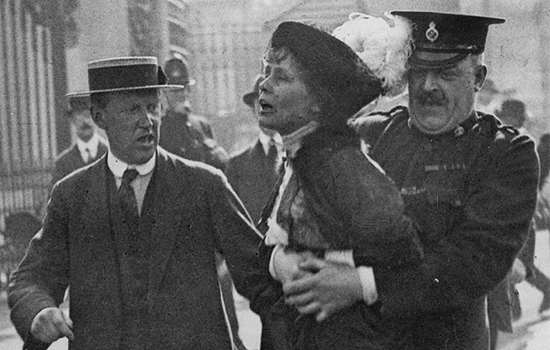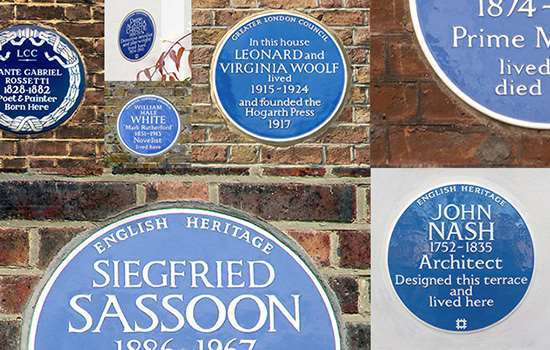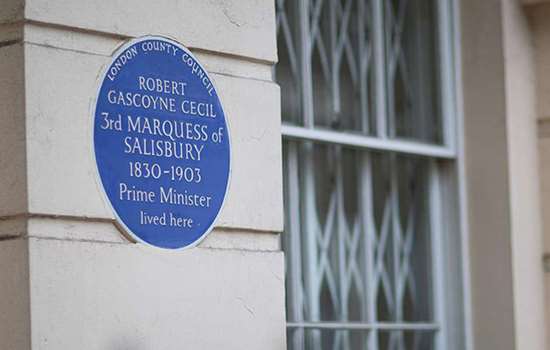JOHNSON, Dr Samuel (1709-1784)
Plaque erected in 1876 by (Royal) Society of Arts at Dr Johnson's House, Gough Square, Holborn, London, EC4A 3DE, The City (financial disctrict)
All images © English Heritage
Profession
Author, Lexicographer
Category
Journalism and Publishing, Literature
Inscription
DR SAMUEL JOHNSON AUTHOR LIVED HERE B•1709. D•1784.
Material
Encaustic
Dr Samuel Johnson was one of the greatest literary figures of the 18th century. He started work on his highly influential Dictionary of the English Language while living at 17 Gough Square in Holborn.
DR JOHNSON’S HOUSE
Johnson moved to number 17 in 1746 in order to be closer to his printers in Fleet Street. Dr Johnson’s House, as it is known, dates from the late 17th century, and has three storeys, a basement and a garret.
Among Johnson’s many visitors here was his former pupil, the actor David Garrick, who presented Johnson’s tragedy Irene at Drury Lane in 1749. It was also in Gough Square that he suffered the loss of his wife Elizabeth, née Jervis (1689−1752). Afterwards he could not bear to sit in the downstairs rooms that he associated with her.
WRITING THE DICTIONARY
In the attic rooms of 17 Gough Square Johnson worked on his famous Dictionary of the English Language. This genre-defining work was completed with the help of five or six assistants who, despite Johnson’s well-known prejudices, were mostly Scots. He presided precariously over their endeavours from a derelict armchair that was missing an arm and a leg.
The dictionary was eventually published in two volumes in April 1755. After it was finished, the house was deemed too large for his needs, and by March 1759 Johnson had moved into lodgings at Staple Inn, Holborn.
COMMEMORATION
The brown encaustic-ware plaque at number 16 is one of the earliest to survive, having been erected by the Society of Arts in 1876. It is an anomaly in that it lies within the City of London, where the Corporation of London has generally been responsible for commemorating historic sites. Dr Johnson’s House is now a museum dedicated to the great lexicographer.
Another plaque to Johnson, which marks the site of the first meeting with his biographer, James Boswell, can be found at 8 Russell Street in Covent Garden.
Nearby Blue Plaques
More About Blue Plaques



